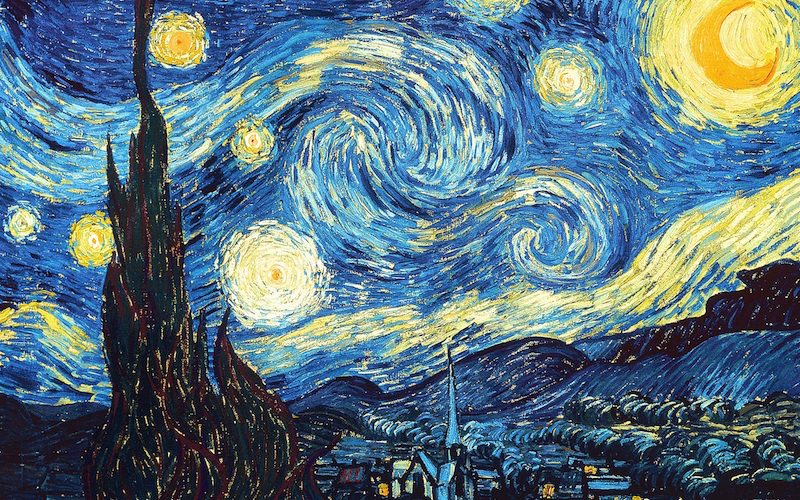The Starry Night by Vincent van Gogh
Episode #7 of the course “Most famous paintings of all time”
Year: 1889
Type: oil on canvas
Dimensions: 73.7 cm × 92.1 cm (29 in × 36 1⁄4 in)
Location: Museum of Modern Art, New York City
Many artists have attempted to capture and depict the night sky, but none did so with the same vigor as Vincent van Gogh in his masterpiece The Starry Night. Painted in 1889 while Van Gogh was being treated at an asylum for his erratic behavior, the painting is hailed as one of the greatest works by any post-impressionist painter and serves as an overarching inspiration for German expressionist painting later in the 20th century.
In Starry Night, Van Gogh shows a night scene outside his room’s window just before sunrise full of stars, swirling clouds, and a brilliant crescent moon over a sleeping idyllic city. In the foreground, a twisted olive tree obscures part of the scene, offering a point of contrast to the active colors that dominate the canvas. Using yellows, whites, and blues, Van Gogh’s color scheme evokes an emotional effect that balances between calming and exciting. While invigorating to look at the vibrant, raw emotion of the image, it is peaceful at the same time. Van Gogh’s technique of long figures with short brushstrokes creates a movement that keeps the viewer looking around the scene in a relaxed way.
The mountains in the background of The Starry Night and the perspectives of the buildings in the city below have also been the subjects of many scholarly reviews. Van Gogh’s technique in relaying the stationary objects in the scene is harsh compared to his fluid sky. The perspective of the buildings and the use of color to relay their texture continue to be analyzed. The Starry Night has become one of the most iconic and popular artworks of the 20th century. Although Van Gogh died unrenowned and penniless, his unique view on the world lives on; Starry Night has become one of the most highly-prized images in the world.
Share with friends

